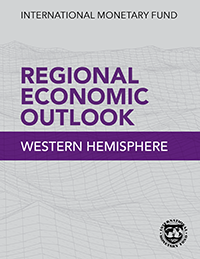Costa Rica: At a Glance
- Current IMF membership: 191 countries
- Costa Rica joined the Fund on January 8, 1946
- Country population: 5.285 million
- Quota: SDR 369.4 million
- Special Drawing Rights (SDR): 438.81 million
- Number of arrangements since membership: 18
- Outstanding Purchases and Loans (SDR): 988.2 million (December 31, 2022)
- Latest Article IV/Country Report: March 1, 2021
- Current IMF arrangement: Latest Report (November 14, 2022)
Office Activities
Who we are
The Resident Representative Office in Costa Rica was opened in July 2021 by Julia Bersch as the inaugural Resident Representative. Mr. Santiago Acosta Ormaechea became the second Resident Representative in December 2022. The Office is composed by the Resident Representative along with three local employees, a local economist, office manager and driver.
What we do
The IMF Resident Representative office in Costa Rica functions as a liaison between the IMF headquarters and the Government of Costa Rica with a primary focus to support the Fund’s Extended Arrangement under the Extended Fund Facility (EFF) and Request for an Arrangement Under the Resilience and Sustainability Facility (RSF) for Costa Rica. In that capacity, the office follows economic developments and policies in Costa Rica, liaises between the Costa Rican authorities, think tanks, civil society and labor unions and IMF staff in Washington, and coordinates IMF technical assistance. It is also a source of information about IMF views for the public, local and foreign analysts, investors, academic and research institutions, and Costa Rica’s international partners and their diplomatic missions.
IMF's Work on Costa Rica
-
IMF Executive Board Receives Request for Flexible Credit Line Arrangement with Costa Rica
May 14, 2025
After concluding the 2025 Article IV consultation with Costa Rica on May 12, 2025, the International Monetary Fund (IMF) Executive Board met on the same day in an informal session to discuss a request from the authorities for a two-year arrangement under the Flexible Credit Line (FCL) with the IMF in an amount equivalent to SDR 1.1082 billion (300 percent of quota or about US$1.5 billion). The authorities intend to treat the credit line as precautionary.
-
IMF Executive Board Concludes 2025 Article IV Consultation with Costa Rica
May 13, 2025
The Executive Board of the International Monetary Fund (IMF) completed the Article IV Consultation for Costa Rica on May 12, 2025.
-
May 13, 2025
Series:Country Report No. 2025/108
-
Costa Rica: Staff Concluding Statement of the 2025 Article IV Consultation Mission
February 28, 2025
An International Monetary Fund (IMF) staff team, led by Mr. Ding Ding, held the 2025 Article IV consultation with the Costa Rican authorities during February 18-28.
-
Costa Rica: Post Financing Assessment-Press Release; and Staff Report
December 23, 2024
Series:Country Report No. 2024/359
Regional Economic Outlook

Western Hemisphere
Regional Economic Outlook
October 2024After successfully weathering a series of shocks, most countries in the region are converging to their (tepid) potential. Growth is expected to moderate in late 2024 and 2025 while inflation is projected to continue easing, although gradually.
With output and inflation gaps mostly closed but monetary policy still contractionary and public finances in need of strengthening, a further rebalancing of the policy mix is necessary. Fiscal consolidation should advance without delay to rebuild buffers while protecting priority public investment and social spending. This would support the normalization of monetary policy and strengthen credibility and resilience of policy frameworks.
Most central banks are well placed to proceed with monetary easing, striking a balance between fending off the risk of reemerging price pressures and avoiding an undue economic contraction.
Medium-term growth is expected to remain close to its low historical average, reflecting long-standing, unresolved challenges—including low investment and productivity growth—and shifting demographics. Worrisomely, the ongoing reform agenda is noticeably thin and could lead to a vicious circle of low growth, social discontent, and populist policies. Avoiding this requires pressing on with reforms. Improving governance—by strengthening the rule of law, enhancing government effectiveness, and tackling crime—is a priority that cuts across all areas of growth. Boosting capital accumulation requires improving the business environment, fostering competition, and increasing international trade. Greater and more effective public investment is also needed. Maintaining a dynamic labor force and increasing productivity requires tackling informality and making formal labor markets more flexible, including to adapt to new technologies. Increasing female labor participation can help boost the labor force and offset demographic shifts.
Read more: Regional Economic Outlook for the Western Hemisphere, October 2024



